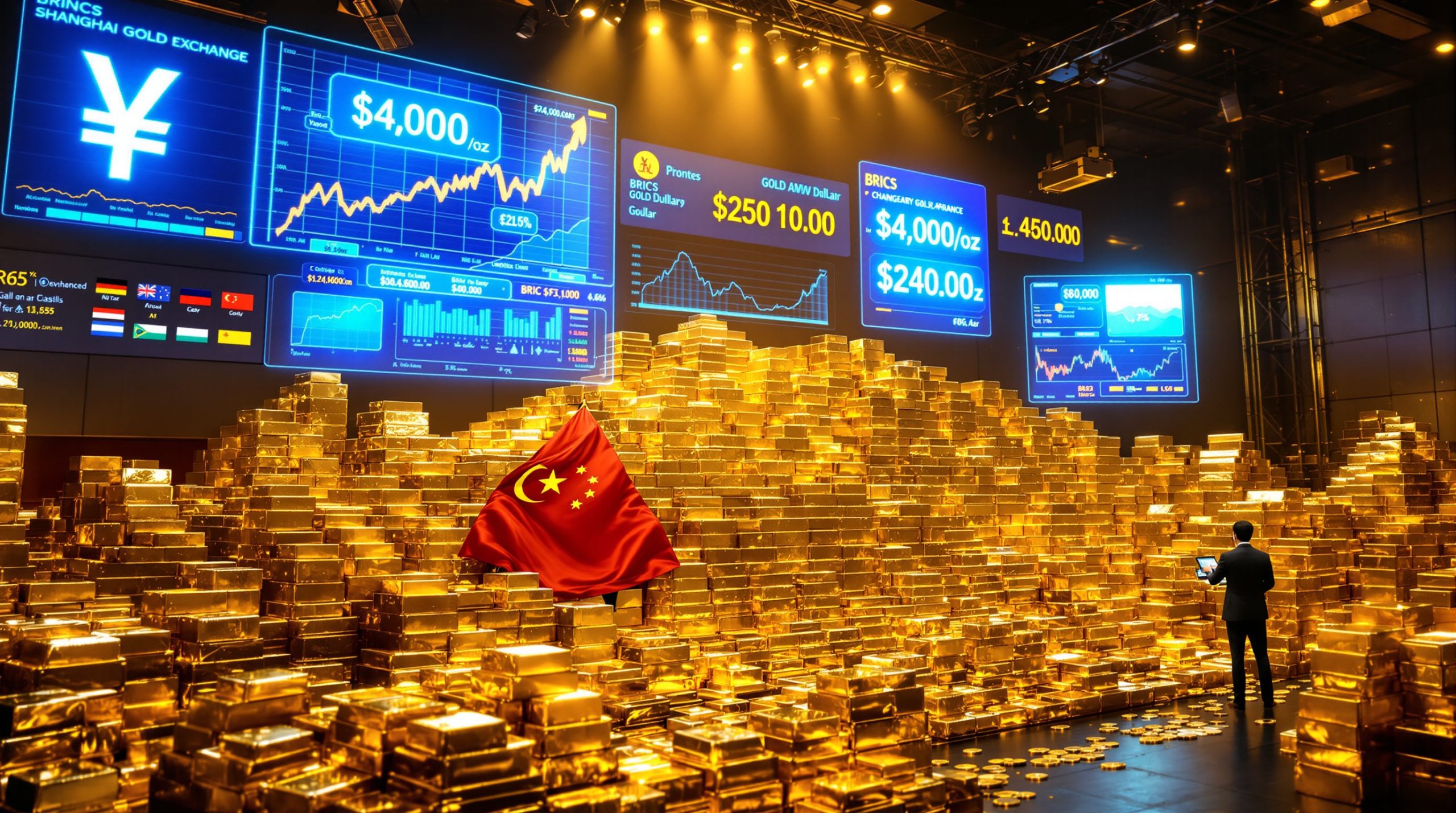Japanese Aluminum Buyers Secure Significant Premium Reduction for Q3 2025
Japan's aluminum market has experienced a substantial shift as buyers successfully negotiated a 41% reduction in premiums for Q3 2025, bringing rates down to $108 per metric ton over the London Metal Exchange (LME) benchmark price. This dramatic decrease marks the second consecutive quarterly decline and returns premium levels to their lowest point since Q1 2024, reflecting significant changes in Asian aluminum market fundamentals.
The negotiations, which began in late May 2025, saw major producers including Rio Tinto and South32 initially offering premiums between $122-$145 per ton. However, market conditions forced a substantial revision downward as discussions progressed.
"Despite concerns over the impact of U.S. tariffs, the actual effect has been limited so far, and the premium has dropped sharply due to weak supply-demand conditions," noted a source from a major trading house involved in the negotiations.
What's Driving the 41% Drop in Japan's Aluminum Premiums?
Market Fundamentals Behind the Sharp Decline
The 41% premium reduction from Q2 2025's $182 per ton reflects a fundamental shift in aluminum market dynamics across Asia. Inventory data from Marubeni Corp reveals that aluminum stocks at Japan's three major ports reached 331,000 tons by the end of May 2025, marking a 3.3% increase from April levels. This inventory accumulation serves as a clear indicator of weakening consumption relative to available supply.
The premium collapse comes despite relatively stable LME benchmark prices, which have been trading around $2,547.50 per ton on the futures market. This divergence between premiums and underlying prices highlights the regional nature of the current market imbalance, with Asian oversupply becoming increasingly pronounced.
How Premium Negotiations Evolved
The quarterly premium negotiations revealed a significant gap between producer expectations and market realities. When talks began in late May, producers sought to maintain premium levels closer to $122-$145 per metric ton. However, as negotiations progressed, local spot market conditions deteriorated rapidly.
An end-user source directly involved in the discussions explained: "There was no significant change in local demand, but local spot prices have fallen during negotiations, even to the $80 level, forcing producers to abandon their initial offers."
This substantial difference between initial producer offers and the final settlement of $108 per ton demonstrates the increasingly buyer-favorable market dynamics currently dominating the aluminum sector. The negotiation outcome represents a dramatic shift from the premium environment seen throughout most of 2024 and early 2025, when producers held considerably more pricing power.
What Are Aluminum Premiums and Why Do They Matter?
Understanding the Premium Structure
Aluminum premiums represent the additional costs buyers pay above the London Metal Exchange (LME) cash price to secure physical delivery of metal. These premiums are negotiated separately from the global benchmark price and reflect regional market conditions that the LME price doesn't capture.
The premium structure includes several components:
- Regional supply-demand balance: Areas with supply shortages command higher premiums
- Transportation costs: Freight, insurance, and handling expenses
- Warehousing fees: Storage and financing costs
- Quality specifications: Upcharges for specific alloys or purity levels
- Delivery terms: Location, timing, and logistics considerations
These premiums serve as crucial price signals for physical market conditions, often moving independently from the underlying LME benchmark price during periods of regional supply-demand imbalance.
Japan's Role as a Regional Benchmark
Japan holds a unique position in the aluminum market as a major Asian importer whose quarterly premium negotiations effectively establish the pricing benchmark for the entire region. As confirmed in the Reuters report, "Japan is a major Asian importer of the light metal and the premiums for primary metal shipments it agrees to pay each quarter over the benchmark London Metal Exchange (LME) cash price set the benchmark for the region."
This benchmark function creates transparency across Asian markets, with contracts in South Korea, China, Taiwan and Southeast Asian nations typically referencing the Japanese quarterly premium. The system provides predictability for both producers and consumers while establishing a standardized pricing mechanism that facilitates trade throughout the supply chain.
The significant decline in Japan's Q3 2025 premium therefore carries implications well beyond its domestic market, potentially triggering similar adjustments across neighboring countries as contracts are renegotiated.
What Market Conditions Are Driving Premium Reductions?
Supply-Demand Imbalance in Focus
The sharp decline in aluminum premiums stems primarily from a growing supply-demand imbalance in the Asian market. Marubeni Corp's inventory data showing a 3.3% month-on-month increase to 331,000 tons at Japan's three major ports provides clear evidence of accumulating supplies outpacing consumption.
This inventory buildup is particularly significant when viewed against seasonal patterns. Typically, the second and third quarters see stronger aluminum demand from construction and automotive sectors due to seasonal activity increases. The inventory growth during this traditionally strong period signals potentially deeper structural demand issues.
Several factors contributing to this imbalance include:
- Slowing manufacturing activity across key aluminum-consuming industries
- Increased regional production capacity coming online
- Redirection of metal flows from other markets facing weaker demand
- Limited production curtailments despite deteriorating market conditions
Local Spot Market Dynamics
The negotiation process for Q3 2025 premiums was heavily influenced by rapidly deteriorating conditions in Japan's spot market. According to sources involved in the talks, spot transactions occurred at premium levels as low as $80 per ton during the negotiation period—substantially below even the final agreed quarterly figure of $108.
This pronounced weakness in the spot market created significant leverage for buyers during quarterly contract negotiations. As one end-user source explained, the depressed spot prices ultimately "forced producers to abandon their initial offers" that had ranged between $122-$145 per ton.
The divergence between spot and contract premiums often serves as a leading indicator for future pricing trends. The current situation, where spot premiums traded at a steep discount to quarterly contract rates, suggested further downward pressure could emerge in subsequent negotiation rounds if market fundamentals remain unchanged.
How Are Global Factors Influencing the Asian Aluminum Market?
Limited Impact from U.S. Trade Policies
Despite earlier concerns about potential disruptions from U.S. tariffs impact market, sources directly involved in the negotiations indicated that "the actual effect has been limited so far" on Asian aluminum markets. This assessment contradicts some analyst predictions that had suggested significant trade flow disruptions would ripple through global markets.
The minimal impact observed thus far suggests that:
- Asian supply chains have adapted more quickly than anticipated
- Regional demand patterns have become increasingly decoupled from North American market dynamics
- Alternative export destinations have absorbed potential disruptions
- Production adjustments have occurred to accommodate changing trade patterns
This resilience against external policy shocks highlights the increasingly regionalized nature of aluminum markets and the growing importance of intra-Asian trade flows in determining regional pricing.
Regional Supply Chain Adjustments
The Asian aluminum market appears to be undergoing structural adaptations that have helped insulate it from global trade tensions. While the transcript doesn't provide specific details on these adjustments, the limited impact of U.S. tariffs suggests regional supply chains have developed greater flexibility and self-sufficiency.
This evolution toward regional market independence marks a significant shift from historical patterns where global aluminum flows moved more freely between major consumption centers. The growing regional self-containment potentially explains why local market fundamentals—particularly the supply-demand balance within Asia—have become increasingly dominant in premium determination.
The Q3 2025 premium settlement reflects these changing dynamics, with regional oversupply emerging as the primary driver of pricing decisions rather than global trade policies or international market movements.
What Does This Mean for the Aluminum Market Outlook?
Implications for Producers and Consumers
The substantial premium reduction creates divergent outcomes for different market participants. For producers like Rio Tinto and South32, the 41% premium decline represents significant revenue compression, particularly for operations with higher production costs. Producers operating in the upper quartile of the global cost curve may face challenging profitability scenarios if premiums remain at these reduced levels.
Conversely, downstream manufacturers stand to benefit considerably from lower input costs. Industries particularly sensitive to aluminum pricing include:
- Automotive manufacturing
- Building and construction
- Packaging and consumer goods
- Aerospace and transportation equipment
- Electrical applications and infrastructure
For these end-users, the premium reduction provides cost relief that could potentially stimulate increased consumption in price-sensitive applications, though this effect may be limited if underlying demand fundamentals remain weak.
Forward Market Indicators
The dramatic premium reduction serves as an important signal about market sentiment and expectations for near-term supply-demand dynamics. The negotiated premium level of $108 per ton suggests market participants anticipate continued supply abundance relative to demand through Q3 2025.
Key indicators to monitor for potential market direction shifts include:
- Inventory trends: Further increases would reinforce bearish sentiment
- Production announcements: Potential curtailments from high-cost producers
- Policy interventions: Energy restrictions or environmental regulations
- End-user demand signals: Order patterns from major consuming sectors
- Currency movements: Particularly the yen's strength against the dollar
Market participants will carefully evaluate whether this substantial adjustment might itself trigger increased buying interest or if fundamental demand weakness will persist regardless of more favorable pricing.
FAQ: Japan's Aluminum Premium Reduction
How does this premium compare historically?
The newly negotiated premium of $108 per metric ton represents a return to levels last seen in Q1 2024, marking a significant correction from the higher premium environment that characterized much of 2024 and early 2025. While not at historical lows, this level reflects a substantial normalization from the elevated premiums that had prevailed in recent quarters.
The premium's decline to match Q1 2024 levels creates an important reference point for market participants trying to assess whether this represents a temporary correction or the beginning of a more sustained downward trend.
Will other Asian markets follow Japan's premium reduction?
As Japan's quarterly negotiations typically establish the benchmark for the region, similar premium reductions are likely to follow across other Asian markets. Countries including South Korea, Taiwan, and parts of Southeast Asia generally reference the Japanese settlement when negotiating their own contracts.
However, the magnitude of reductions may vary based on:
- Local supply-demand balances
- Specific bilateral relationships with producers
- Transportation cost differentials
- Import regulations and tariff structures
- Currency exchange rate effects
Markets with tighter supply conditions may see less dramatic reductions than the full 41% decrease observed in Japan.
What factors could reverse the downward premium trend?
Several potential catalysts could shift market dynamics toward higher premiums:
- Production curtailments: High-cost smelters reducing output or closing
- Supply disruptions: Energy shortages, labor actions, or political instability
- Demand recovery: Unexpected strength in construction or automotive sectors
- Energy cost increases: Higher power prices affecting smelter operations
- Logistics constraints: Shipping bottlenecks or container shortages
- Policy interventions: Production restrictions, export limits, or environmental regulations
Any combination of these factors could alter the current supply-demand balance and create conditions for premium increases in future quarters. Additionally, shifts in iron ore price trends and broader commodity markets often indicate changes in industrial demand that could eventually impact aluminum pricing.
How might this impact global aluminum producers?
Major producers including Rio Tinto and South32 will face revenue challenges from the substantial premium reduction. For producers with higher operating costs, compressed margins may necessitate operational adjustments including:
- Cost-cutting initiatives
- Production optimization at more efficient facilities
- Potential curtailment of highest-cost capacity
- Reassessment of expansion plans and capital investments
- Strategic focus on value-added products with more stable margins
Producer responses will likely vary based on their position on the global cost curve, with lower-cost operations better positioned to weather the current premium environment. Furthermore, the mining industry evolution continues to push companies toward greater efficiency and technological adoption to maintain competitiveness.
Table: Japan's Quarterly Aluminum Premium Trends (2024-2025)
| Quarter | Premium ($/ton) | % Change | Key Market Factors |
|---|---|---|---|
| Q1 2024 | ~$108* | – | Baseline comparison period |
| Q2 2024 | Higher than Q1 | Increase | Seasonal demand improvement |
| Q3 2024 | Higher than Q2 | Increase | Supply constraints, stronger consumption |
| Q4 2024 | Higher than Q3 | Increase | Continued tight supply conditions |
| Q1 2025 | Higher than Q4 2024 | Increase | Peak of recent premium cycle |
| Q2 2025 | $182 | Decrease from Q1 | First signs of weakening demand |
| Q3 2025 | $108 | -41% from Q2 | Weak demand, inventory build to 331,000 tons |
*Approximate figure based on comparison statement in source
Market Analysis Note:
The 41% premium reduction for Japanese aluminum buyers represents one of the most significant quarterly declines in recent years. This adjustment clearly signals that market fundamentals have shifted dramatically, with supply abundance now outweighing demand strength. While producers initially resisted this correction with higher offers, spot market weakness ultimately forced acceptance of substantially reduced premiums. This outcome demonstrates the cyclical nature of aluminum markets and highlights how quickly conditions can change from producer-favorable to buyer-favorable environments.
Analysts tracking commodities markets note that gold prices analysis and iron ore forecast insights can provide additional context for understanding broader market trends that might eventually influence aluminum pricing through macroeconomic channels.
Further Exploration:
Readers interested in learning more about global aluminum market trends can also explore related educational content at Reuters' commodity analysis, which offers regular updates on metal markets and industry developments.
Looking to Capitalise on Resource Market Movements?
Stay ahead of critical market shifts with Discovery Alert's proprietary Discovery IQ model, which instantly identifies significant ASX mineral discoveries and delivers actionable insights to subscribers. Explore how major discoveries can lead to substantial returns by visiting the Discovery Alert discoveries page and position yourself for investment success.




